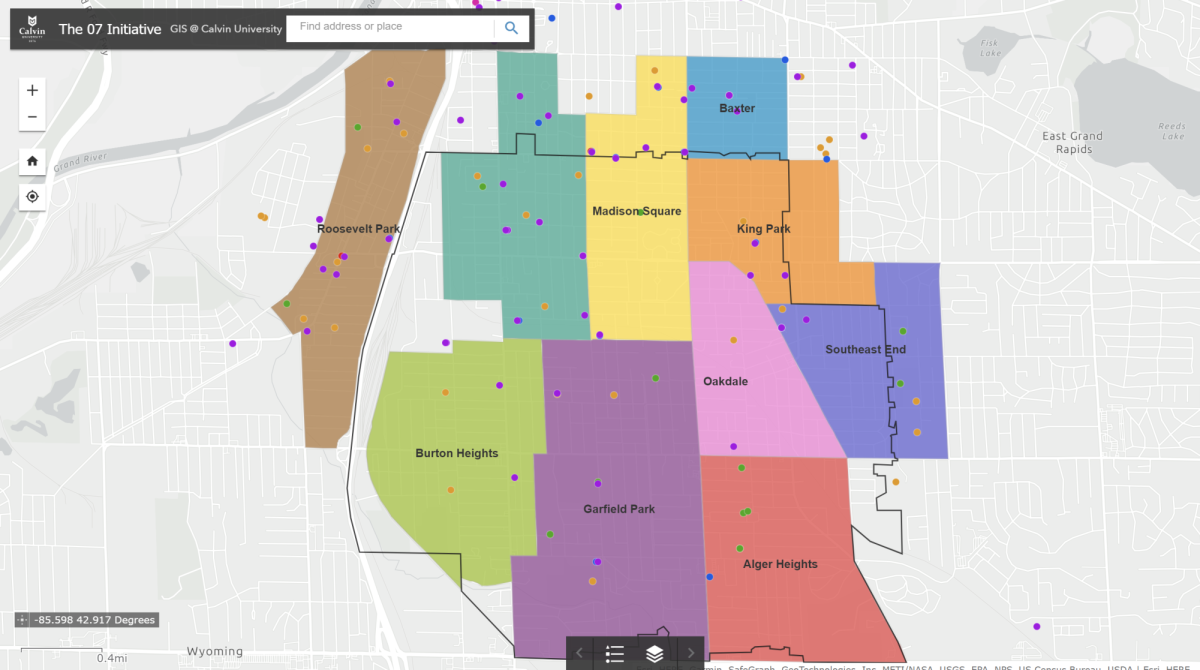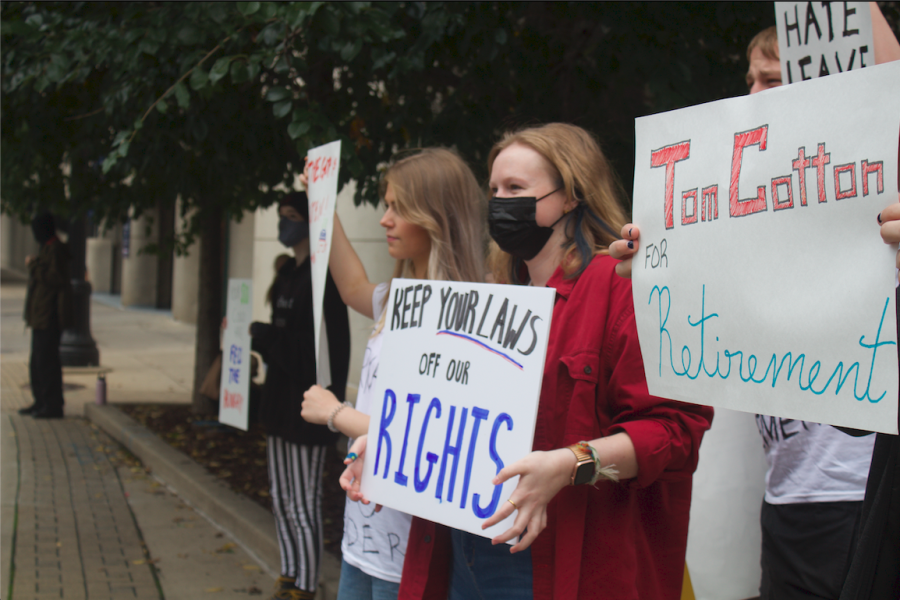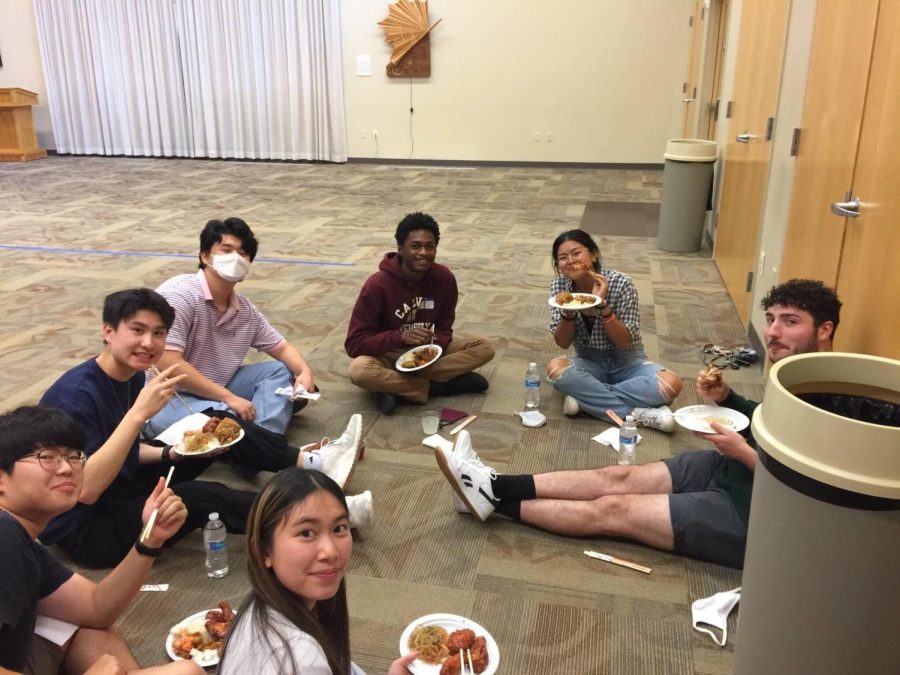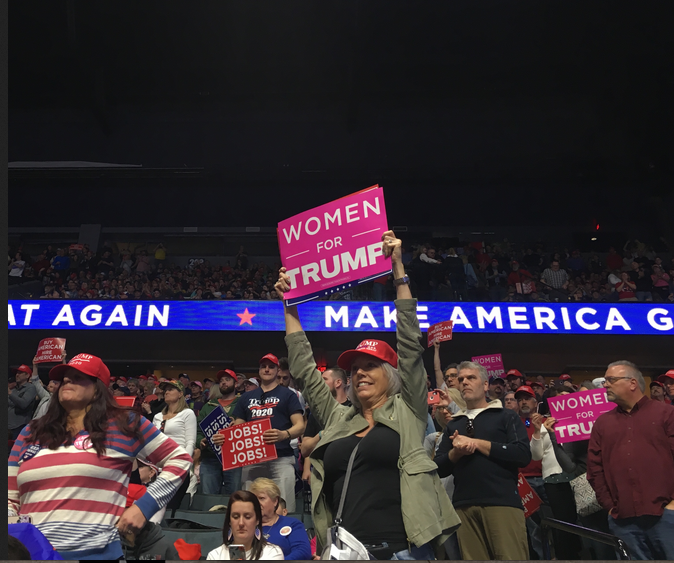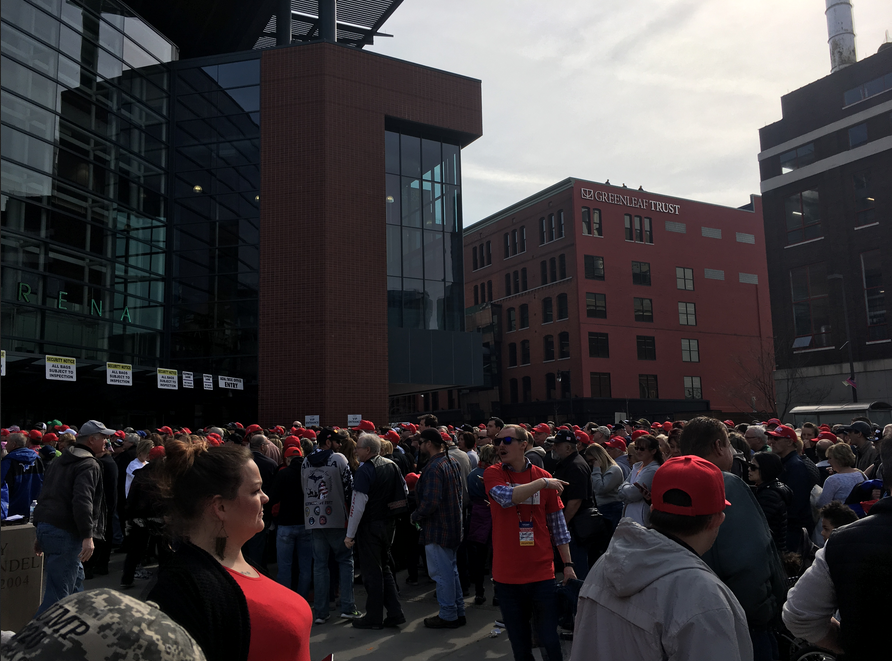Chanting “Donald Trump has got to go,” and “Love trumps hate,” protesters took to the streets of downtown Grand Rapids last week Thursday and Saturday as part of a national movement united under the hashtag #NotMyPresident.
On the first night, Thursday, Nov. 10, hundreds gathered at Rosa Parks Circle for an hour of rallying speeches. By the time the protesters started marching, the crowd had grown to approximately 2,000.
The Grand Rapids Police Department had been notified of the protest, and extra police officers were deployed to offer security to the demonstration, which remained peaceful throughout both nights.
Protesters held signs touting a wide range of emotions and statements. “Trump doesn’t represent us,” “White people: we need to do better,” “We are all immigrants” and “Resistance to tyranny is obedience to God,” are just a few of the slogans that were on display.
The variety of statements points to the vagueness of the protests’ message. Calvin junior Gwyneth Findlay, who attended both protests, noted that the first protest felt “directionless.” After the election results dropped, “people didn’t know what to do,” but they felt they must do something — and that something was to gather and march.
Briana Urena-Ravelo, co-founder of the Grand Rapids chapter of Black Lives Matter, organized the Thursday protest.
In an article published in the Rapidian, Urena-Ravelo expressed her impetus for protesting the president-elect: “Right now is the time we show what we will not tolerate, who and what we stand against, what we do not accept and what violence and bigotry we shall not allow.”
Her article expressed a frustration with the language of unity and acceptance: “Think of it like this: on the micro-level, when someone abuses you, you leave the situation, not stay and join hands. When someone intimidates or threatens or mistreats you, you call them out and demand justice, support and recourse and get distance, often permanently.”
Thursday night’s protest was “very organized and structured and very well done,” according to Calvin senior Megan Pluymert.
Emcees introduced speakers throughout the night and led the crowd in chants in between the testimonies and rallying cries. Pluymert reported the speakers “sharing stories of fear […] stories of how they’ve already experienced hate in the last couple of days, people being more vicious to them then they’d ever experienced.”
In a similar vein, GVSU student Morgan Hayden called the Thursday protest a “raw” expression of emotion about the election.
The protest of Thursday night was one of a wave of demonstrations across the country that received widespread coverage and criticism.
President-elect Trump sent mixed messages about the protests, first claiming in a tweet that the protesters were hired and called the protests “very unfair!” and later on Friday tweeting: “Love the fact that small groups of protesters last night have passion for our great country. We will all come together and be proud.”
In contrast, Saturday night had fewer protesters, but “it seemed more focused on showing that we want Grand Rapids to take a stand against the harmful rhetoric that Trump exudes,” Hayden said.
Saturday’s protest was not organized by Urena-Ravelo. Participation was much more open, and Trump supporters attended alongside anti-Trump demonstrators.
Pluymert estimates 1,500 people participated on Saturday, and called the atmosphere both “angry and loving” at the same time.
Saturday night began with the playing of the national anthem, followed by a range of speakers.
A Hillary campaigner welcomed the crowd to join the “Stronger Together Grand Rapids Group.” He extended this offer to “Democrats, Berniecrats, Independents, Green Party members and even Republicans,” promising that the group was seeking feedback, strategies and constructive criticism. However, he reminded parties and politicians in power to “respect our existence or expect our resistance!”
Another speaker criticized Trump’s unwelcome attitude toward refugees and tacit support of Putin’s invasion of other countries.
Trump supporters became disruptive when a rape survivor started to decry Trump’s actions and attitudes as sexual assault. “There was one girl talking about a rape she experienced and a lot of Trump supporters were speaking over her and trying to get her to stop and chanting ‘Build a wall,’” recounted Pluymert.
When Trump supporters were handed a microphone, they used “hateful rhetoric,” according to Pluymert, and were eventually booed off the stage.
A similar example occurred when a young woman started to speak but was interrupted by a heckler, who was shut down by chants of “Let her speak!” and “We love her.”
An organizer explained that the event was for everybody, so gave a counter-protester some time at the mic, urging the murmuring crowd to give him a chance. He explained that he was thankful for the opportunity to speak and launched into an argument that the crowd needed to stop sowing division, as even “your leader” (Clinton) had conceded and accepted the election results. People on the platform held out hands with peace signs in an attempt to keep the crowd from shutting him out, but he still grew flustered speaking over dissenting comments.
The organizer took over when things fell apart and emphasized that the majority here was committed to having their voices heard.
Several transgender speakers took the platform as well, with one particularly memorable comment coming from a sixteen-year-old transgender boy who asserted, “I am transgender and I am more of a man than Donald J. Trump.”
The protest on Saturday ended with a call to hold hands and join in a prayer to Jesus Christ. Pluymert called the prayer “very uncomfortable” because “it made a lot of people feel alienated, which is exactly the opposite of what we wanted to do,” alluding to the purpose of the protests to listen to and support marginalized voices.
The protests have received criticism for their lack of direction and incoherence of message. Pluymert echoed this concern, and stated her best understanding of the protests’ goal: “To stand against everything that Donald Trump stands for.”
This does not necessarily mean trying to overturn the results of the election, though some at the protests used the platform to argue against the electoral college. Clinton earned a greater percentage of the popular vote than Trump.
Instead, for many, the protest was about expressing solidarity for people who are experiencing fear and intimidation in the face of the “divisive, hateful rhetoric” that has been given a national platform in this presidential election.
Pluymert expressed some of her concerns about the divisiveness of some of the statements made under the #NotMyPresident hashtag, but it did not deter her from attending both protests: “I may not agree with the hashtag, but I’m still going to protest the hate.”
Hayden believes the protests are just a starting point for real action. “I feel like the protests are good, but I really hope people take them as a prompt to start calling people like Justin Amash and other representatives, local government figures, imploring them to not tolerate hate, misogyny and racism.”
Findlay sees the movement solidifying its purposes in the future. The third #NotMyPresident protest, this Friday, Nov. 18, will focus on protesting Trump’s selection of Stephen Bannon for his chief strategist, among other issues.




